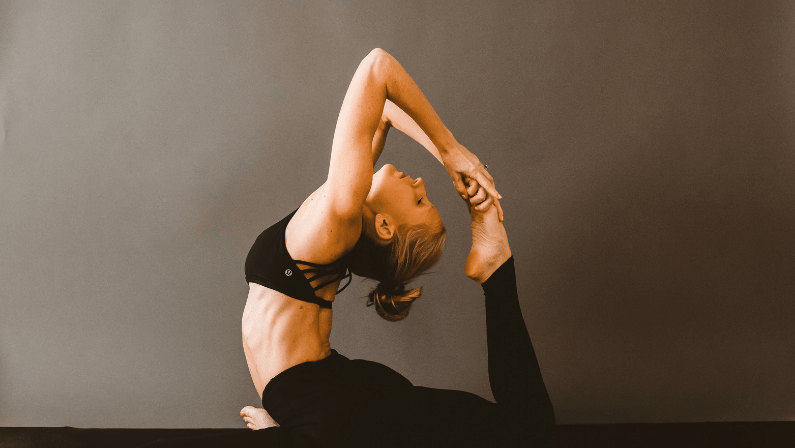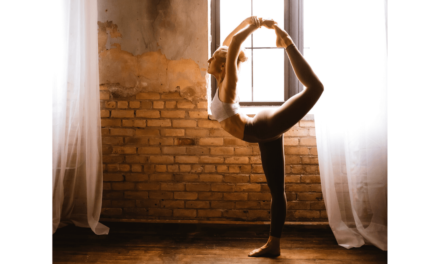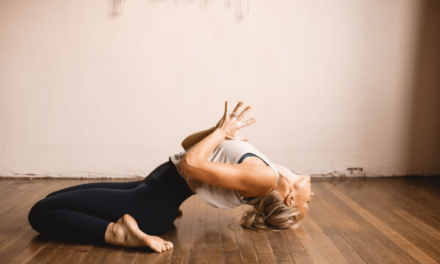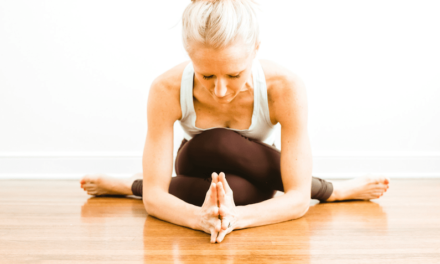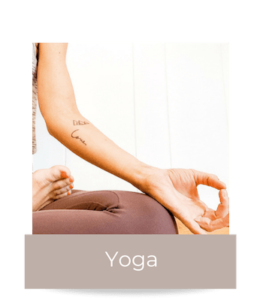We all come to our yoga mats for the first time for different reasons.
Some want to gain flexibly and strength, others may want to heal an injury, and many unroll their mats to reduce stress and just want to bliss out in savasana (corpse pose).
But there comes a point after starting yoga to take the next step forward to advance your practice to keep yourself from hitting a plateau and just simply keep the trajectory of your growth headed forward. Whether you’ve already successfully healed your injury through yoga or you can now touch your toes, there is always something new to work on.
Trust me.
Because I hate to break it to you, but your yoga journey is never over. It’s a continual practice you work with as your practice evolves, your life evolves, and what you need to combat the outside influences that are constantly being thrown at you.
So, how do you advance your yoga practice?
It all comes down to where you are on your journey.
Are you already balancing on your hands? Do you struggle to find your yoga sense of calm when you’re stuck in traffic? There are many ways to advance your practice both physically and mentally (because both are important), and here are 15 ways to get you on your way.
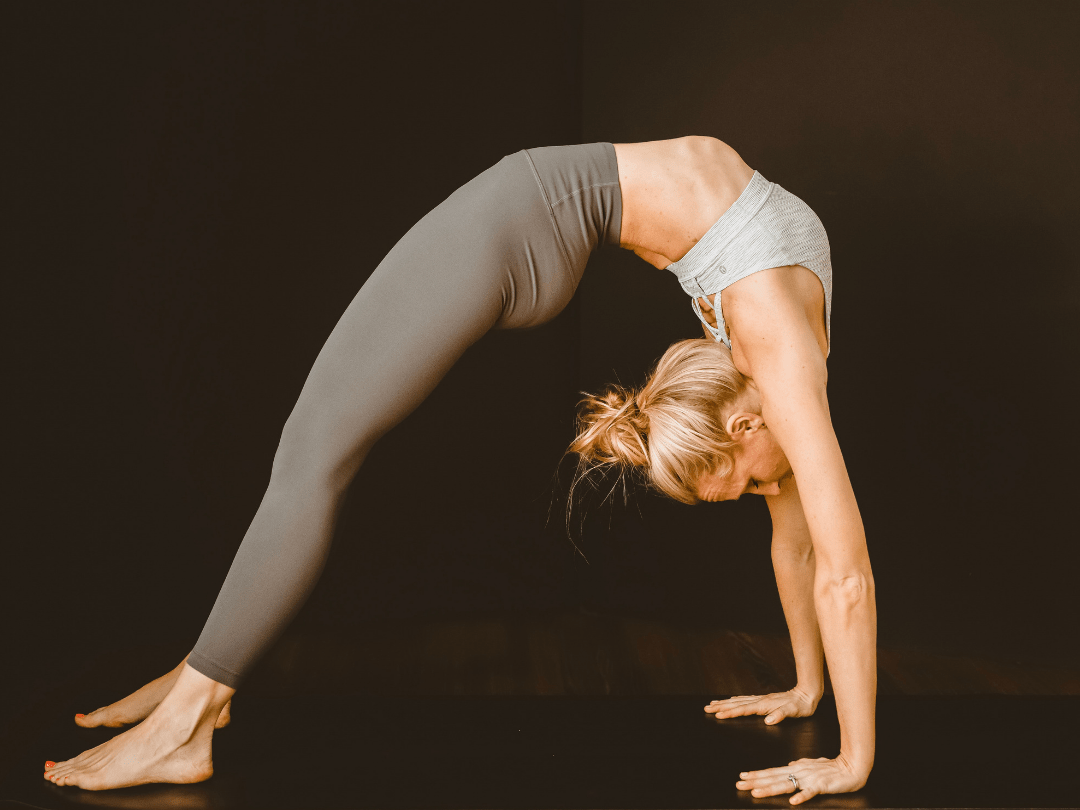
15 Ways To Advance Your Yoga Practice
1. Practice What You Resist – It’s What You Need The Most
Do you love turning your world upside down in inversions but can’t sit still in meditation? Do you always leave yoga all happy and stress-free only to yell some choice words out the window to a driver that happens to cut you off?
Because what you ignore is what should be your priority.
What comes naturally to us is easy to keep going back to. But where is the growth in that? Be bold enough to build up what need’s attention. Whether that is to be brave to try an arm balance or taking your intention off your mat to keep your yoga bliss with you when you’re answering urgent email, fill the holes that you are overlooking. They will help build up what you are already mastering on and off your mat.
2. Be Humble And Open To Learning
Once you are clear on where you need to drive growth in your yoga practice, both physically and/or mentally, it’s time to take a beginner state of mind and be ok to not know how to do something. This requires you to let go of your ego and be at ease to not be the best at something.
Be ok to fall on your face for your first attempt at crow pose (you’re close to the ground, a good tuck and roll will help you here, I’ve been there). And be ok with when your mind wanders right away when you start meditating.
It’s all a practice and we all start somewhere. You just have to take the step forward and start where you are. You learn as you go.
3. Ask Questions – Engage With Your Teacher
Yoga is an individual practice, but we’re all in this together.
I can safely say, as a yoga teacher, that teachers love to help you work on postures, yoga philosophy, and any other yoga-related topics we can geek out on.
Don’t be afraid to ask us!
One of the more common questions I get is how to do a headstand. There is something about inversions that students feel comfortable asking, and rightfully so! They can be intimidating. Read more about headstands here, I WILL get you in your first Tripod Headstand.
But even chats on chakras, doshas, or other physical posture questions, we can help point you in the right direction to learn more.
4. Practice With Different Teachers
Usually, there is a teacher that resonates with us and we tend to plan our weekly yoga classes around when they teach. While that is great, there are SO MANY yoga teachers out there that have something new and unique to offer you. It may be physical cue in Warrior II that finally makes the posture click after years of practicing it, or a new sequence that keeps you on your toes to break you out of routine.
Similar to how we all started to practice for our own unique reason, teachers teach for their own reason too. You might just find that next step forward with someone new guiding you.
5. Practice Different Styles Of Yoga
And while you’re looking up new teachers to try out, take a chance on a different style of yoga to practice. Do you always practice yoga with weights? Try a restorative class. Do you always in a non-heated room? Try a hot yoga class!
In my own teaching, I mix postures and sequences from different types of yoga. Not only does it keep the class interesting, but the range of postures out there can complement their counterpart to keep you safe, physically challenge your body, and mentally stimulate something new.
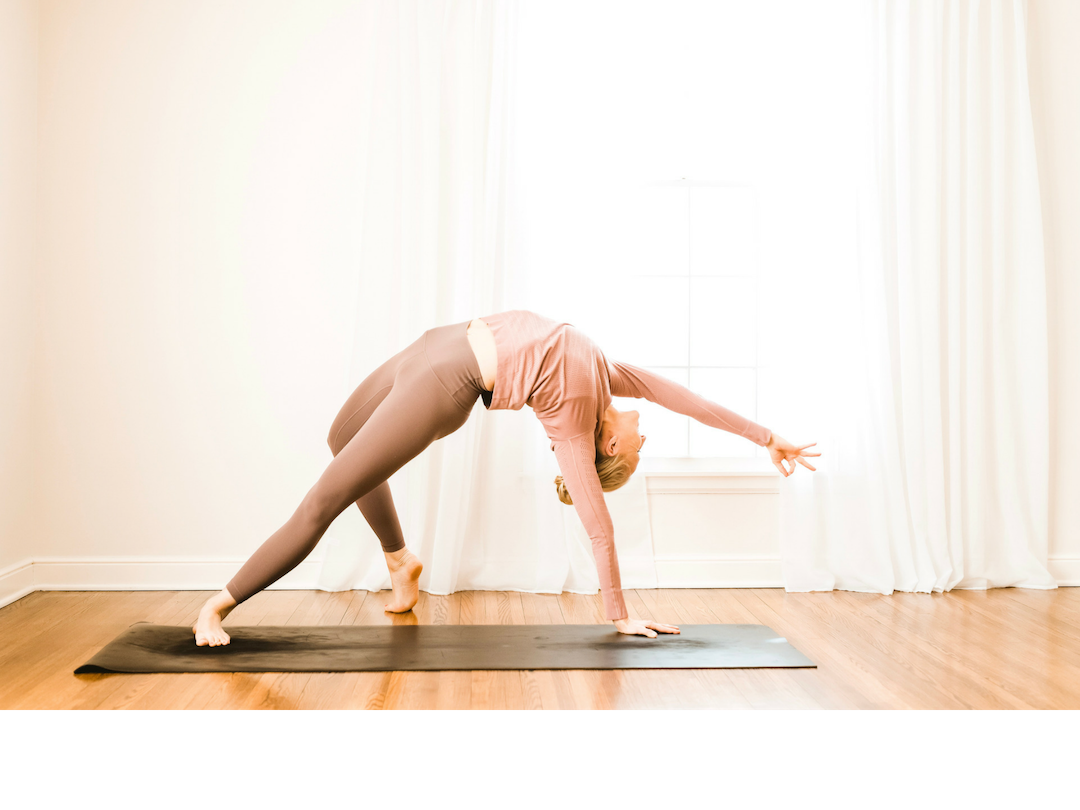
6. Get Inspired By Watching Others
The world of yoga is global and that means there is an unlimited inspiration to tap into to try on and off your yoga mat.
Find a few yogis to follow on Instagram or watch a free youtube video of someone you’ve heard about and take note of their movements and alignment or their overall approach to living a mindful life.
I say this not to have you be like them, but rather to spark new ideas for you take and try on. Think of them as a virtual teacher and continued education.
For example, what prep poses do they do before moving into a peak posture? Or did they do an Instagram story on how they dealt with a bad day.
Teachers are everywhere, and some aren’t even certified yoga teachers. Noodle on that one.
7. Practice At Home
If physical advancement is where you want to focus, then an at-home workshop is one of the most effective tools you can use to quickly conquer that next challenging posture.
The truth is, yoga classes often move at a fast pace and don’t always give you the time to breakdown how to do side-crow or another advanced posture.
Google what it is you want to work on, or better yet, use the advice from your teacher that you solicited, and make a commitment to practicing it daily. Each time you try it, you’ll learn more and make adjustments for improvement. You don’t have to worry about falling in front of others in class or time restraints. It’s simply just you “practicing” yoga.
8. Take A Workshop or Go On A Retreat
Enjoying the company of like-minded people will only fuel your practice for the better.
The saying by Jim Rohn,
“You are the average of the five people you spend the most time with”
is a prime example of this. Surround yourself with those who have similar interests and questions as you do. Be inspired and engage with them to bring that wisdom back to your own mat.
Not only will your emerge yourself with diving into the details of figuring out a physical posture or how to live more mindfully, but you’ll walk away with a new outlook on your practice. Both on and off your mat.
9. Move Slow, Use Props, Modify
Remember when I said your yoga journey is never over? Well, that means you have time to properly work on whatever is on your list. Moving too fast into some postures can cause injury, and then you have a whole different area to work on.
So, use the props that are there. Blocks help you find more length and extension along with relieving tension in your muscles. Continual use of props will teach your body and muscles how to do the posture and they will adapt and grow with you.
Some of the most advanced yogis modify in their practice. It isn’t always about doing what you think you “should do”, it’s about what feels right. Take your time and be nice to yourself. Your results will be stronger when properly worked on. Remember the Tortoise and the Hare? The same concept applies here. Take your time.
10. Use a mirror to see your own alignment.
In full transparency, I have a love/hate relationship with mirrors in a yoga class. Mirrors can be distracting and can influence you to get into a posture based on how it should look versus how it feels, in which case I am not a fan.
However, at the beginning of my yoga journey, I was/am incredibly grateful to have had a mirror to see my alignment. Sometimes we don’t realize we’re not stacking our knee over our ankle until we physically see it in front of us! Use a mirror as a teacher to give you cues on how to safely get into a posture for good alignment. Once you’re there, take note of how it feels and then come back to that feeling the next time you’re there.
Setting yourself up properly will only pave the way for more postures in the future.
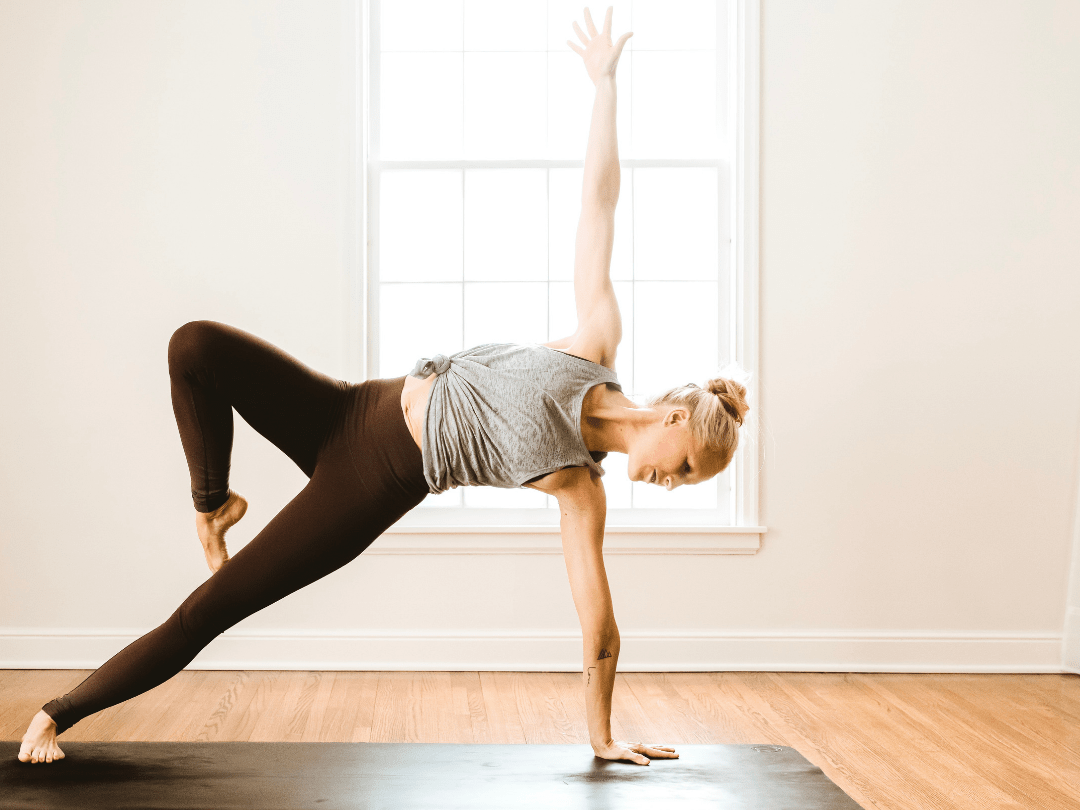
11. Don’t Be Afraid To Take One More Breath (especially when you want to get out)
Have you ever heard your teacher say, “Find your edge”? This is the place where comfort meets discomfort. When effort meets ease. It’s when you find out how strong you are and train your mind to understand the strength you already have in your muscles.
Now if you are in pain, get out of the posture. But if you’re feeling sensation, then challenge yourself to stay for just one more breath. Your confidence and physical strength will double down every time you do this. I promise. It’s the soft push forward that will get you to where you want to go.
12. Invest In A Good Yoga Mat
Believe me when I say your mat can change your yoga practice. I did a deep dive into a yoga mat review and why it’s important to be mindful of what you choose to practice on. But the bottom line is technology has come a long way to maximize your practice.
When I finally invested in my first quality mat, I could not believe what I was missing out on. The grip and cushion alone changed how I felt about Downward Facing Dog. But there is more to it than just technical performance. A proper yoga mat is made without causing Ahimsa (non-violence) to the environment and ourselves. By bringing your practice to something bigger like this is a great way to advance your practice on a major scale.
13. Commit To A Diet That Fuels Your Practice
When you eat light and clean, your physical practice will follow as well as your mental well-being.
On your mat, when you eat good foods, you’ll have a whole different level of energy and lightness when you balance. Have you ever noticed how you feel in yoga when you eat well and when you don’t?
I have.
Before yoga, I recommend lots of water and a light snack. Save your meal for afterward to refuel. My favorite go-to after yoga is a smoothie. Check out a few recipes here and here.
14. Study Up And Journal
There is so much more to yoga than just the physical postures. Reading up on yoga philosophy will give you a deeper understanding of why you feel the way you do during and after yoga. This will then transpire into mindful acts to take with you off your mat.
This is one of the ultimate ways to advance your yoga practice. When you know more about something, it just means more and you have a deeper appreciation for it.
Journaling or self-study (svadhyaya) is another way to appreciate the practice you have developed by documenting it. You can look back and see how far you’ve come and note where you need to focus on in the future.
15. Be consistent
More than anything, show up and be consistent. Stretch every day and take a few deep breaths to reset and set intentions. A sporadic yoga practice will not yield any results.
Commit to your practice and you will see results.
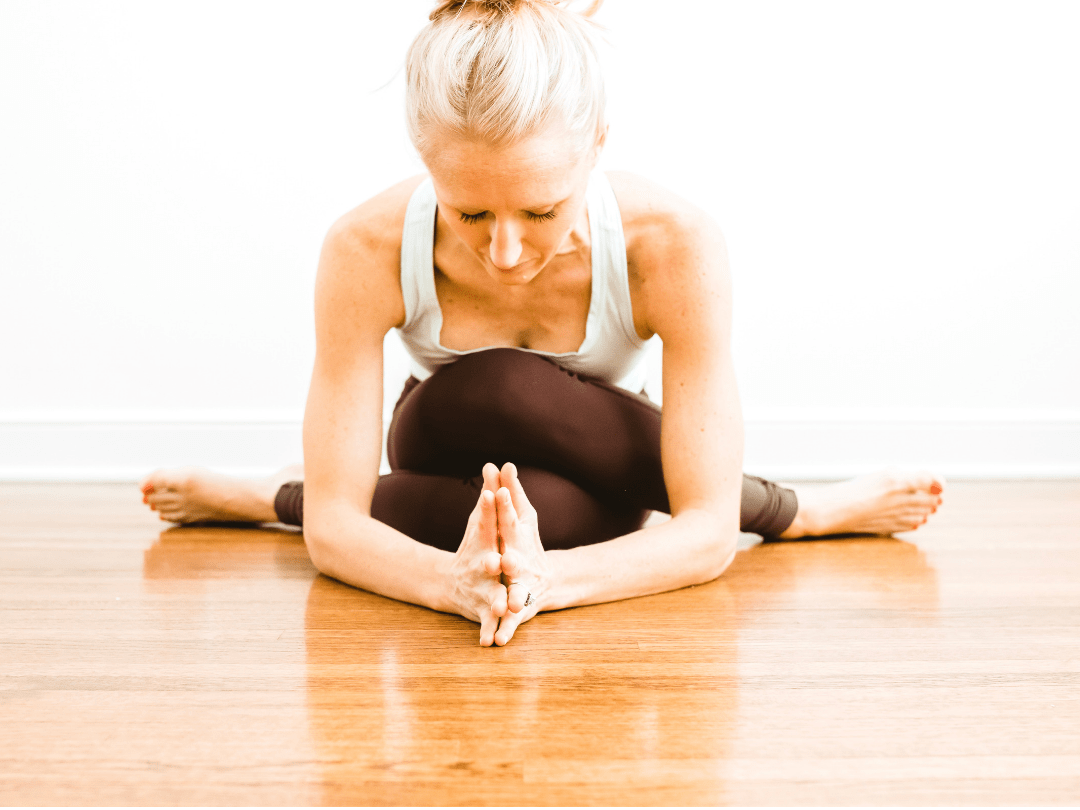
Yoga is a practice. And that means it will always be a practice of tuning in to work on what needs attention.
An advanced yoga practice does not mean balancing on your hands, though you can learn a lot about yourself on the journey there, but rather seeking to continually push yourself toward growth as life changes and evolves.
And this means on and off your mat.

